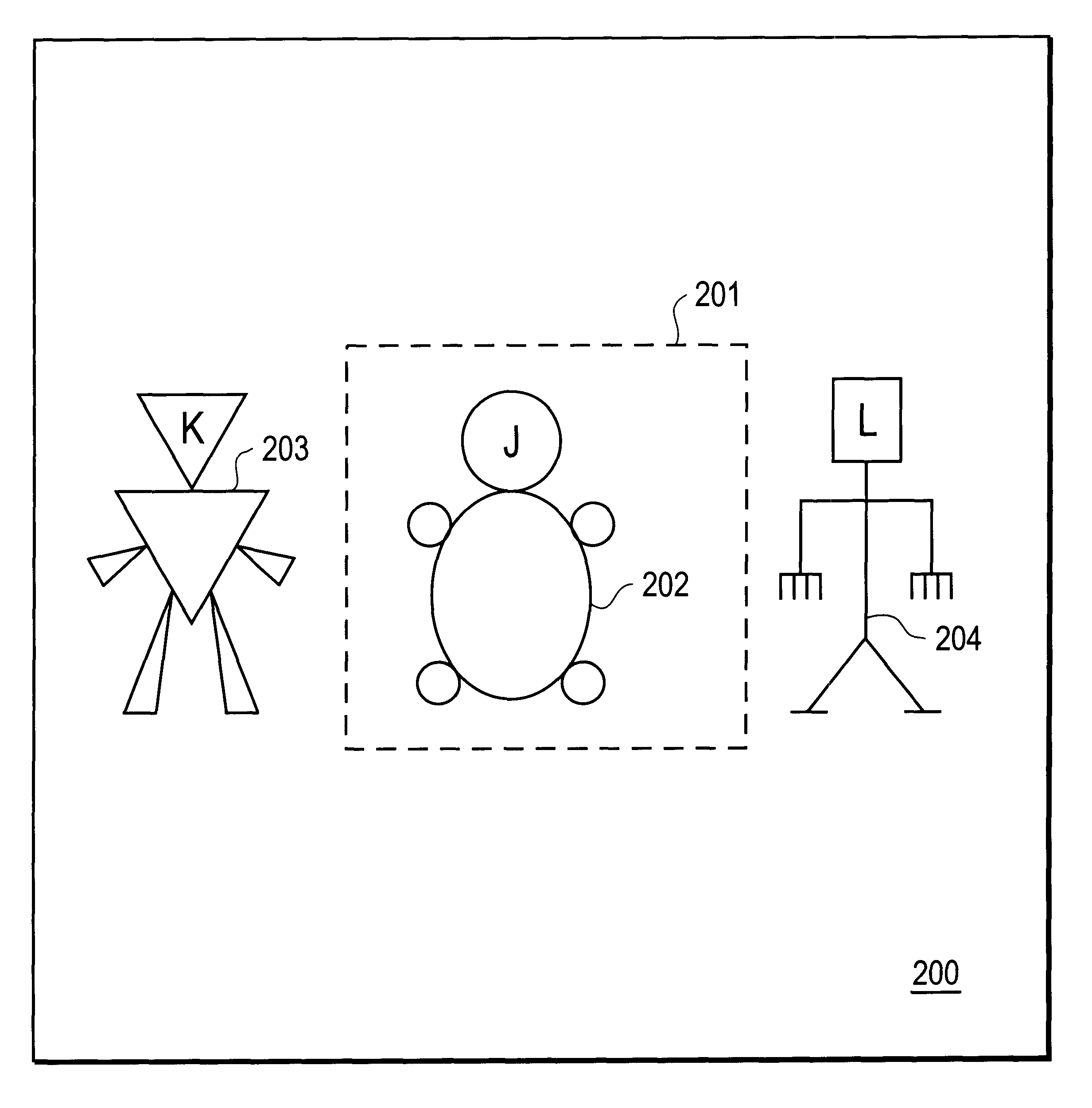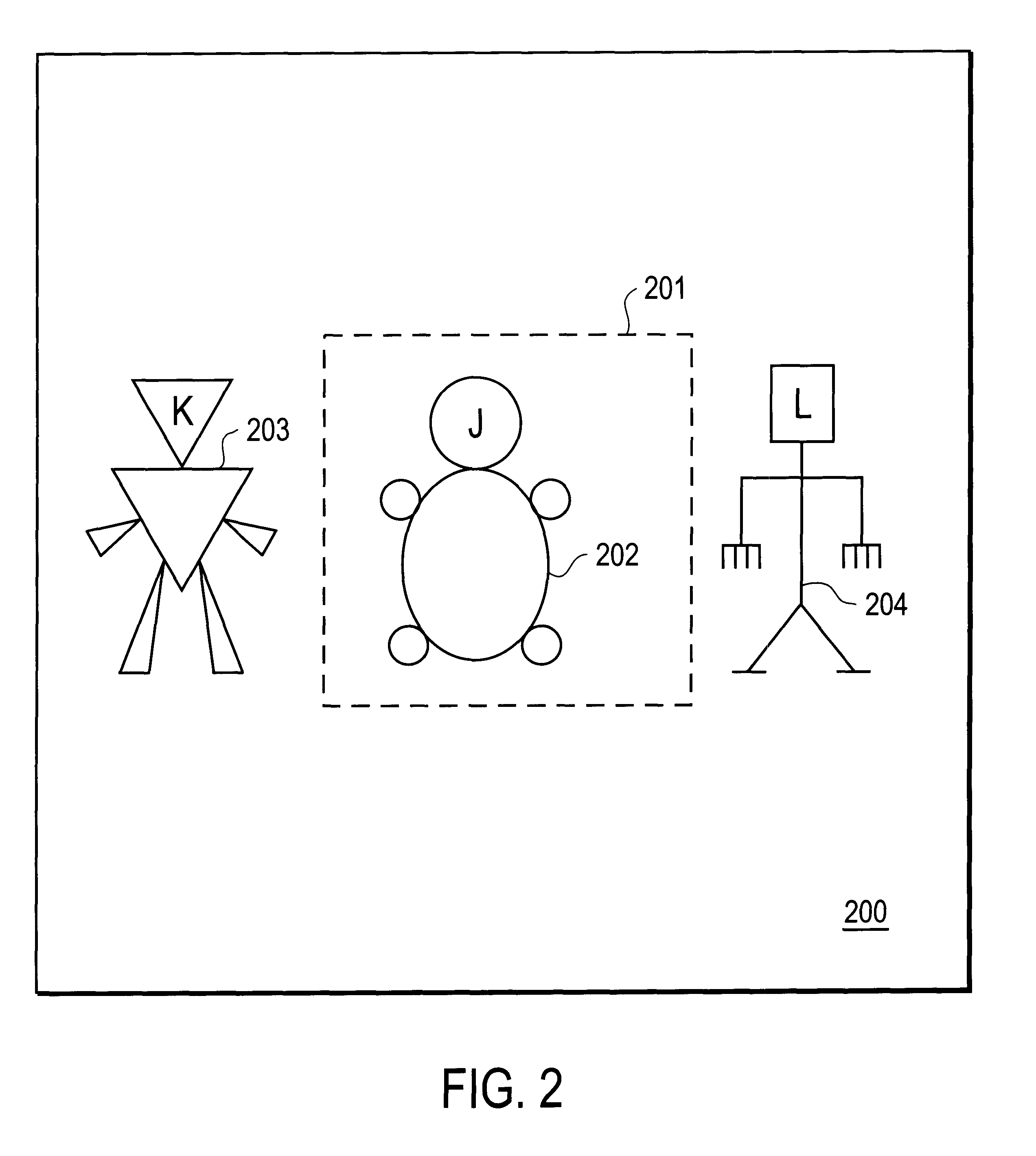However, adding polygons necessitates paying the price of having to manipulate more geometry.
When a rendering engine is incapable of drawing the entire scene within the allotted
time frame, either the rendering engine must slow down or it must reduce the graphics complexity.
Even after
culling all of the objects that are not visible, the rendering engine may still not be able to draw everything within the required
time frame.
But this simple approach ignores important factors such as the cost of performing the transition, or that external parameters (such as lighting conditions, or where the object is in the view) may influence what LOD to present.
This conventional approach frequently leads to undesirable flickering of objects and unstable frame rates.
If there are too many objects and all objects are drawn at the highest level of detail, then there may be too many objects to draw in real time, resulting in a drop in the
frame rate below the desired
frame rate required for smooth interactivity.
Then objects previously in the center of the screen will possibly be in the periphery of the scene and may
flicker, causing the user to move the camera back toward the original object.
This flickering
induced movement of the camera by the user in generally undesirable.
Even if the flickering of objects does not alter the user's interactive behavior with the scene, it is nonetheless visually displeasing and therefore undesirable.
The flickering may additionally cause unevenness or
instability in the
frame rate, called hitching, which results in a staccato movement in the scene as the frame rates oscillates.
Greedy approaches suffer from the above-described flickering problems which may indesirably influence the
visual appearance and the user's behavior in the interactive scene.
A
greedy algorithm approach may still result in flickering, as the importance levels change from one object to another.
However, this approach undesirably results in the consequence that the most important object in the scene (for example, the object in the center and / or closest to the user) is drawn at a lower level of detail if it first entered the scene at a lower level of detail.
This conventional approach frequently leads to undesirable flickering of objects and unstable frame rates.
If the developer is risky, he may decide that it is extremely important that the most important object (for example, the object in the center) be drawn at the highest level of detail, with the undesirable consequence that the appearances of objects in the background may suffer.
Thus, all objects are drawn at the same level of detail from frame to frame even though the most important objects are undesirably not drawn at the highest levels of detail which would otherwise be possible.
The upper branches of these curves correspond to the efficient allocation of resources, since they yields increasing returns with increasing risks.
However, the level of detail 203 provides a less realistic representation of the object K.
Because an arbitrarily large number of objects may appear in any given display screen 200 at a certain frame, it is often not possible to draw all such objects with the highest level of detail because to do so would require too much time for the computer
system 100, thereby reducing the frame rate and providing degraded choppy interactivity to the user.
Otherwise, undesirable flickering of the object appears to the user over consecutive frames as the object is displayed with alternating levels of detail in each
consecutive frame.
If the distance is far, then the
granularity is not very good.
Sometimes there is no good solution for all objects, and the developer must decide if the which object will suffer.
Similarly, it is impossible to divide the z-buffer space into distances of light-years without the molecules all being grouped into the same z-buffer slot and thereby destroying the molecules z-dimensional independence.
Even worse, if the draw order of the two objects varies from frame to frame, undesirable flickering between the two objects will result from frame to frame.
The upper branches of the curves corresponds to the efficient allocation of resources, since they yield increasing returns with increasing risks.
 Login to View More
Login to View More  Login to View More
Login to View More 


